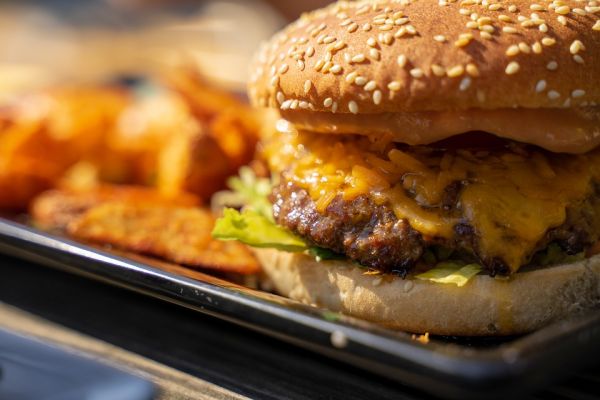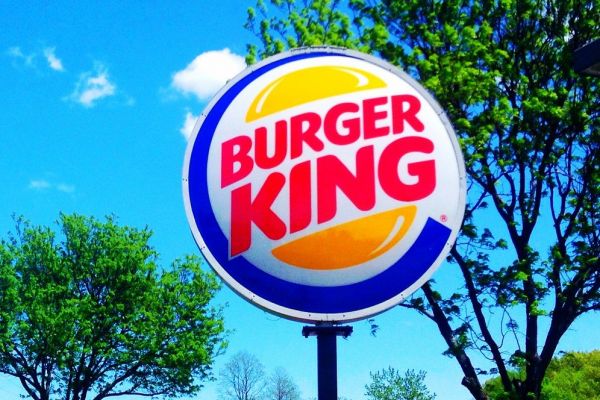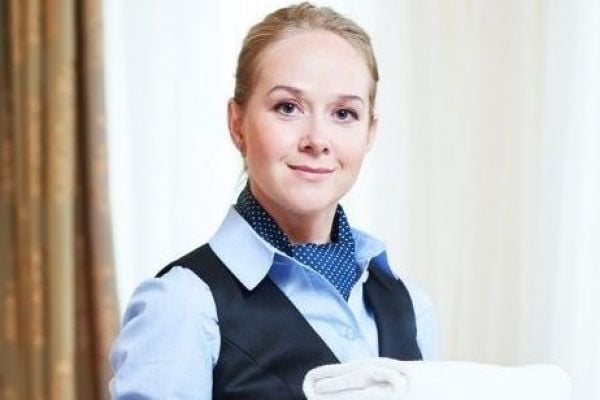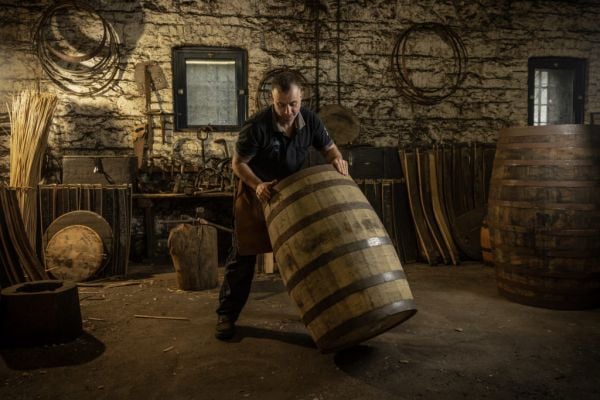“I don’t get the whole burger thing,” says Tom Colicchio, half-laughing.
The acclaimed cook and Top Chef judge is at one end of the long, marble-topped bar in the lounge area of his soon-to-open restaurant Fowler & Wells, standing next to a handsome green leather stool. It’s an inviting view that makes you want to pull up a seat and order a classic-styled cocktail. Alongside, you could get superb clams casino or a skirt-steak salad with horseradish, but as of yet, no burger.
We are inside the just-opened Beekman hotel in Manhattan’s Financial District. The bar is part of the show-stopping renovation of an 1890s building that you might not have noticed if you were walking by. Now the place has captured New York’s attention, especially since pictures of the towering, nine-story atrium began blowing up Instagram a few months ago.
It can be boring to hear people go on about a grand space you haven’t visited—like listening to someone talk in detail about their convoluted dream—so I'll spare you much more except to say that the new Beekman beats all the descriptions. Underneath a giant skylight are floors accented with gleaming ornate railings, glowing lights, and arched doorways. It could be the most magnificent doll house hotel, on a giant scale.
This time-traveling view is what drew Colicchio to do his first new restaurant project in six years, in a part of town that he’s never had a restaurant. His last was Riverpark in Kips Bay.
Fowler & Wells is named for a pair of phrenologists who worked in the building once upon a time. (For most of its history, the Beekman was an office building; the restaurant was an unassuming retail space in its last incarnation, before the Thompson hotel group took over the property.)
Instagram: Instagram photo by The Beekman
That evocative nod to a 19th century pseudo-science is reflected in the glamour of the décor: a series of chandeliers, a tiled mirror that dominates one wall, stained glass windows comprising dark-colored rectangles, red wine-colored chairs set at well-spaced tables. It’s unlike many of Colicchio’s other restaurants, which are modern and minimalist. The room feels like a European train station restaurant from a time when you wanted to travel by train.
The menu, too, is a departure from anything the chef has done recently.
“When I started cooking in the late ’70s, it was the French/American cuisine I was trained on. As my career grew, I brought in influences from all over—Italy, South America, Asia. But the sense of time you experience when you walk in this building, you can’t fight it,” Colicchio said. “The place was built in 1883. The food wants to be Old World.”
To that end, a tasting menu Colicchio and executive chef Bryan Hunt have designed is like the greatest hits of beloved throw-back French: Oysters Rockefeller; Lobster Thermidor; Duck à l’Orange, Sole Veronique, studded with grapes; Tornedos Rossini; Baba au Rhum, for $155.
“They’re the dishes I grew up reading about in the ’70s,” said Colicchio. “This was the kind of food people took seriously—really the only kind of food that got reviewed back then, circa 1975 to ’90, when I was coming up at Mondrian.”
But if you’ve eaten any of these dishes in the last decade or three, you might find they don’t taste precisely the same. Instead of making facsimiles of the classics, Colicchio and Hunt are lightly updating them, cutting back on the flour and the cream, among other innovations. (For one thing, no matter how nostalgic you want to be, authentic versions of the classics just don't taste as good as everyone says; they also can hide obscene amounts of fat.)
What’s more, they’re doing it by intuition.
“Somewhere I have my copy of that Escoffier cookbook [Le Guide Culinaire] that codified everything, but so much of it is just feel,” explained Colicchio. “I’m not trying to recreate old French cooking—and I don’t want to get too reliant on outside forces. So I didn’t look at cookbooks, and I didn’t go to restaurants when we created the menu.
“I still haven’t been to Le Coucou,” he continued, name-checking the classically inspired French restaurant not far from Fowler & Wells that’s, for my money, the year’s biggest, best opening so far in New York. “Of course I want to go, but I’m holding off.”
Outside the tasting menu, the food at Fowler & Wells is a bit more modern—a bit.
It’s going back to a time when you make good use of black pepper. It’s going to be a challenge, but a good one.
The menu is small, with eight appetizers and seven entrees. As a starter, there's savory leek and fennel soufflé with shellfish ragout and hamachi with sea urchin and osetra caviar ($27 and $29, respectively); on the entrée menu, there's diver scallops with black truffle vinaigrette and beef cheeks with braised potatoes and porcinis ($37 and $43, respectively).
At the bar, alongside Colicchio's Manhattan, an appealing list of house cocktails is labeled the Phrenological Cabinet, including the $18 James DeVille with bourbon, absinthe, and orange bitters and a large format Conjugal Love made with gin, black tea, and banana liqueur. Colicchio is also doing the lounge menu and room service for the hotel—except for breakfast and late night, it’s essentially the lounge menu—fighting hard to stay away from the clichés that you see on bar menus, without going overboard. There are frog’s legs with a vibrant green garlic sauce and little potato raviolini; steak tartare with capers and mustard and, yes, a Caesar-ish salad made with hearts of romaine, served alongside the tomato tart tatin.
“OK, I have made chicken Caesar salad in my life; my Dad made a great Caesar. But just because a lot of hotels serve it, doesn’t mean it has to be on the menu here.”
Likewise, Colicchio is fighting hard not to serve burgers, although he might have one at the lounge. “If I eat two a year, it’s a lot. And that’s at places that are known for their burgers.” He added: “People shouldn’t think that you’re guaranteed a burger wherever you go.”
Colicchio recognizes that there’s a risk to serving this type of food and not just because of his burger stance.
“I know, from tasting a lot of food on Top Chef, that salty, sweet, spicy, acid, umami wins every time—and that’s not what this cuisine is,” he said. “When you combine those elements, your taste buds respond. That’s my challenge now: I can’t just add Calabrian chiles or ’nudja to a dish. I can’t add everything in my arsenal.
“It’s going back to a time when you make good use of black pepper. It’s going to be a challenge, but a good one.”
Opening night is set for Thursday, Oct. 20.
“Deep breath,” he said. “We’ve been excited for weeks. Opening is the fun part. The lead up is what’s tedious. There’s nothing like sitting there at 5:30 p.m. on that first night, and then having the first ticket come through. It’s been a while.”
News by Bloomberg, edited by Hospitality Ireland









